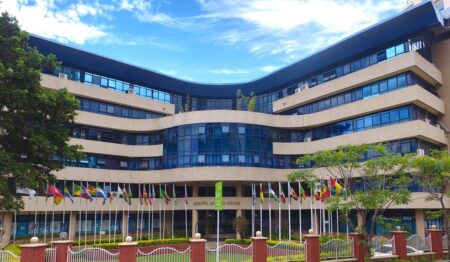Climate change is affecting Africa greatly and it is only contributing 4 per cent of the greenhouses emissions, hence United Nations Economic Commission Agency for Africa (UNECA) highlights that just by early 2030 Africa will start experiencing macroeconomics losses.
On the same mark, the African Development Bank (AfDB) is in assisting the continent’s efforts towards mitigating and adapting climate risks, particularly extreme weather events, and gaining resilience on drought via mobilization of crucial funding for such adaptation and mitigation projects.
AfDB (which is accredited by the international implementing agency since March 2016 by Green Climate Fund- GCF) together with GCF have successfully mobilized over $12 billion of climate finance to support climate resilience and low-carbon emission in the continent.
Despite the efforts are taken by Africa in that manner have not yielded significant results compared to other regions, still—AfDB eyes another opportunity to fuel more resources to African countries via new GCF funds.
As the United Nations Climate Change Conference—COP 25(Conference of Parties) which took place in Spain, Madrid earlier this month, ended with little results as anticipated, particularly on the fate of carbon markets.
On the other hand, the COP25 was the ground for assessing the role of Adaptation Benefits Mechanisms (ABM).
AfDB established the interim Executive Committee of the ABM on 4 October. The ABM Executive Committee had adopted an ambitious work plan for 2020, prioritizing guidance on methodologies to determine adaptation benefits and incremental costs of ABM projects.
According to AfDB, the ABM aims to mobilize public and private sector finance to assist developing countries with meeting climate change needs for adaptation set out in their Nationally Determined Contributions (NDCs) under the Paris Agreement, in particular, those requiring international cooperation.
Luc Gnacadja, chair of the recently formed interim Executive Committee of the ABM, highlighted that climate change scenarios are a reality that we have to deal with.
According to Gnacadja, renewable energy is expected to attract $2.3 trillion in investment this year. The same will be true in the next phase of the world’s response to climate change for adaptation.
“ABM is groundbreaking. The continent where ABM should start is rightfully Africa because it has the highest vulnerability, the poorest communities and the most development challenges while having benefitted least from climate finance. I hope that COP 25 recognizes its importance and gives it a place in the implementation of the Paris Agreement as the only cooperative approach for adaptation proposed so far,” Gnacadja told delegates at the COP 25 climate conference in Madrid.
Further, UNECA foresees the development landscape in Africa to be dictated by the role of climate action the continents play over space and time. According to UNECA analysis, the limited resilience of African countries against the negative impacts of today’s climate are already resulting in lower growth and development, highlighting the consequences of an adaptation deficit.
Also, the indicative findings show lower GDP growth per capita ranging, on average, from 10 to 13 per cent (with a 50 per cent confidence interval), with the poorest countries in Africa displaying the highest adaptation deficit.
In 2016 GCF mobilized over $10.2 billion which is equivalent to pledges from 42 state governments to finance adaptation and mitigation projects in developing countries. The key focus is on health, food, and water security, livelihoods of people and communities, infrastructure and built environment and ecosystems and ecosystem services.
The Fund gives recipient countries access to funding through accredited national and sub-national implementing entities (including NGOs, government ministries, national development banks, and other domestic or regional organizations that can meet the Fund’s standards).
Countries can also access funding through accredited international and regional entities (such as multilateral and regional development banks and UN agencies) under international access. Private sector entities can also be accredited as implementing entities
“The design of the ABM methodologies and theory of change must be welcoming for SMEs and micro-enterprises. Despite the focus on Africa, the ABM EC will seriously consider opening its services to the rest of the world during the pilot phase, as there is already interest from other regions and ABM is potentially applicable in all countries,” Gnacadja said.
However, Anthony Nyong, Director for Climate Change and Green Growth commented on the prospects of the climate finance landscape in Africa, after a session during the COP 25, as cited by AfDB.
“Giving monetary value to adaptation will go a long way to crowding in investments that will increasingly build resilience in the least developed countries and small island developing states in Africa. The African Development Bank’s financing for climate mitigation and adaptation action reached parity in 2018, a first among development finance institutions. This demonstrates client responsiveness to adaptation investments when incentives are right,” he added.
In addition, AfDB is committed to nearly tripling its current climate financing to reach $5 billion a year by 2020. AfDB’s climate spending will increase to 40 per cent of its total new investments by 2020 compared to 26 per cent on average from 2011 to 2014.










